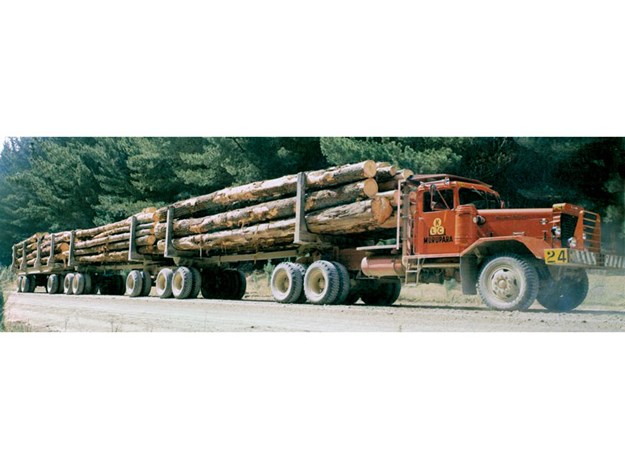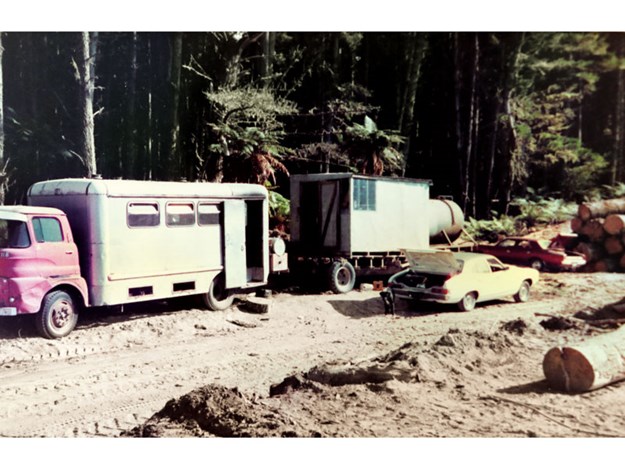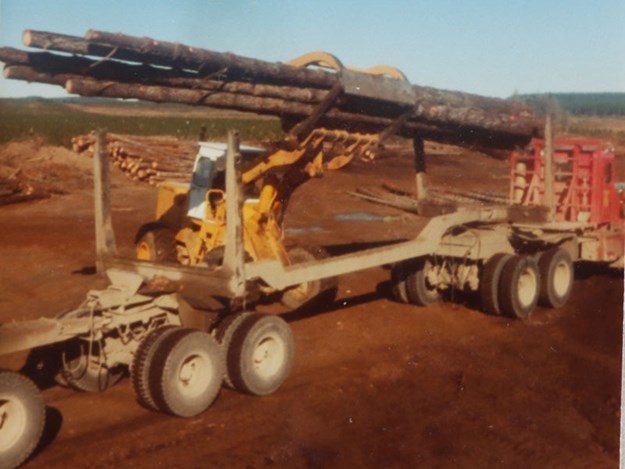Forestry commentary: Murupara—a logging town
Deals on Wheels' Pat Cox delves into the history of Murupara—a thriving small logging town in the '70s and '80s
 |
|
Murupara was a thriving small logging town in ’70s and ’80s
|
Murupara has been in existence long before the planting of Kaingaroa Forest. Maori history shows the existence of people occupying this area before it became a staging post for the Rotorua to Napier coach link. The Waikaremoana lake road, even for the traveller today is still a challenging excursion.
Strategic importance
.jpg) |
|
Murupara really came into its own from the planting and development of Kaingaroa back in the 1920s and ’30s
|
Murupara really came into its own from the planting and development of Kaingaroa back in the 1920s and ’30s when its strategic location become apparent. The Government identity, Tasman Pulp and Paper Company, was formed in the ’50s with Kawerau going to be the receiver of all the lumber coming from Kaingaroa to feed the newly built Tasman Pulp and Paper mill.
To facilitate this, in 1944, the Kaingaroa Logging Company (KLC) was formed—a private company with the crown identity Tasman Pulp and Paper Company being one of the shareholders.
Smoking the tyres
My first foray to Murupara was in 1972, carting logs off-highway with a five-axled Leyland Hippo for Stan Williamson Transport, Te Puke. Stan is still alive and kicking at 95 years young today.
I carted from Campbell’s crew down to the railhead at Murupara, often with the pins up in the hope that I had more than 40 tonnes on-board. Being a young hothead driver, I did this for no other reason other than to try and annoy the LeTourneau stacker drivers, who could only lift 40 tonnes in one hit.
Trying to get three loads to the rail before an export load home was a big day. There were times when the load was so fat the bolsters would roll over onto the tyres going around the corner onto the overhead bridge down into Murupara.
Smoke would be pouring off the tyres. Never did I hit the 40 tonnes but got close at 39 and somehow managed to escape a boot up the jacksie from Stan if he found out.
KLC trailers
 |
|
Most trucks would either haul one, two, or three trailers
|
With all the timber accessible to Murupara through off-highway roads, KLC brought in Canadian Pacific trucks and assembled them in their purpose-built workshops in Murupara. Their front axles were too heavy for on-highway use, but the robust design was perfect for carting old crop radiata pine.
 |
|
An original KLC work gang bus, complete with diesel-fuelled cooker
|
KLC manufactured all the trailers in their workshops and most trucks would either haul one, two, or three trailers. For a small country like New Zealand, to undertake the build of these truck and trailers was very progressive for a company based in the middle of Kaingaroa.
 |
|
KLC Pacific, being loaded by Hough 65 1981, Cox Logging gang 31 |
On the operator’s seat
In 1978, working for Christianson Logging on a block at Matea, bordering on the Whirinaki, the loader driver got crook and the boss asked who could drive a loader? As it was snowing quite hard, my hand shot up and I firmly planted my backside in the seat—and there it stayed.
The weather got so bad that the crew decided to knock off, and with no radios in those days, the last truck to leave with the gang went back to the yard, spreading the word that we were still loading. The afternoon was a baptism of fire; I had never loaded a logger before. After 17 double and triple Pacific KLC trucks, I limped home mentally exhausted but satisfied.
Money goes round
Kaingaroa at that time was owned by the Government through the New Zealand Forest Service (NZFS). KLC would have been paying stumpage to NZFS, so in a way, it was just a money go round situation, with Tasman Pulp and Paper a shareholder in KLC.
KLC as a logging company for its time was very progressive. They had their own company logging crews, their own trucks, workshop, service crews; the complete operation was under the one umbrella.
This was a sizeable workforce that in the ’70s and ’80s made Murupara a thriving small logging town, with a healthy shopping centre, café, chemist, sports shop, supermarket, and a few others along with a couple of local dairies, pub, and the police station.
Stump to the mill
I was always curious why forest owners when contracting out logging work did not let the contractor tender for work from the stump to the mill. I went to Australia in the late ’80s looking at the new Timko self-levelling feller buncher and stroke delimber, and the contractor I met there, contracted from the stump to the mill, which (obviously) included trucking.
My take on the New Zealand system is that forest owners at the time kept their contractors separate and therefore smaller. Being hocked up to the eyeballs in debt gave forest owners better control over the contractor and made it easier to screw rates.
It’s only in the last 20 years have we seen logging crews grow in size, from one crew to a number of crews. Finally, sense came to the industry; a larger organisation can withstand downtime longer than just a single crew and they would have freehold machinery that they can park up and still keep operating on a skeletal budget for longer.
Overcoming the hurdles
But where did all this leave Murupara—a bustling logging town, in an empty cutover and not a tree in sight; a town destroyed from selling off Government assets. NZFS became Forest Corp, KLC was broken up by big companies, and workers were encouraged to spend their superannuation on purchasing their own logging equipment from the new corporate players.
Arguments over stumpage in Kaingaroa saw some of these new and old contractors who worked for corporate businesses get caught in the crossfire over the arguments over stumpage and many a machine ended parked up in yards all over the central North Island.
It’s a sad day when looking at aerial photos of the once proud logging yard of KLC to now a rundown state of decay. But the people of Murupara are fighters and have overcome huge hurdles in their hurdle. I have nothing but respect for such a resilient community.
Find new and used heavy machinery for sale in NZ
Keep up to date in the industry by signing up to Deals on Wheels' free newsletter or liking us on Facebook.

.jpg)










-(1).jpg)
.jpg)
.jpg)


